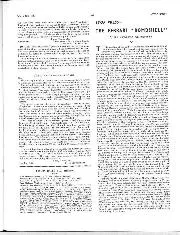
STOP PRESS- THE FERRARI "BOMBSHELL"
STOP PRESS— THE FERRARI "BOMBSHELL" by the Continental Correspondent THE big question of the past few weeks has been the truth behind the statement issued by Ferrari that his cars…
WHEN TRIALS WERE TRIALS
Sir,
In days of yore when trials were trials, and comp. tyres had not been discovered, and bottom gears were still in their ” early teens,” a competitor entered his own motor, self-tuned and prepared, and enjoyed himself in competition with other similar cars. He pitted his skill on gradients against two main factors, (a) lack of power, (b) wheelspin. One demanded more power and, or, less weight, the other more weight and, or, less power. The position to-day is that (a) does not
exist. The modern car cannot be stopped by gradient alone” we are told.
Nonsense ” The modern car plus the modern bottom gear can’t be stopped ” is nearer the truth. Regarding (b) we now seem to have a “
vicious” circle : bigger and better comps.—slimier shine—bigger and better comps. So there seems to be three alterations needed in trials regulations
1. Abolition of comp. tyres.
2. Abolition of low bottom gear-ratio. This could be done either by stating a maximum ratio per litre (or h.p.) or by awarding prizes by a formula, e.g. :— N x 100
R x H.P.
N =Number of hills climbed non-stop. R=Ratio of bottom gear. H.P.=R.A.C. Rating. This ought to produce motors with
sensible ratios, and would allow all the old standard hills to be used without too many people getting first-class awards.
3. Abolition of the “Wolf in Sheep’s Clothing,” or non-owner drivers of motors prepared by the manufacturer : which species seem to have crept into trials since the awarding of team prizes. I am, Yours etc.,
L. A. Cowcinr,. Cheshatn Rank,
Bury. [The idea of using a formula taking into consideration bottom-gear ratios is a
most interesting one. For example, if a 12 h.p. car with 12 to 1 bottom gear climbs five out of six hills clean it just beats a car of the same rating which climbs six hills by reason of having a ratio of 15 to 1—which seems fair enough. Concerning (3), at first trade interference would seem detrimental to private owner entries, but actually private owners seem to take heart from professional and semi-professional successes, so it may be as well if such participation continues.— Ed.)